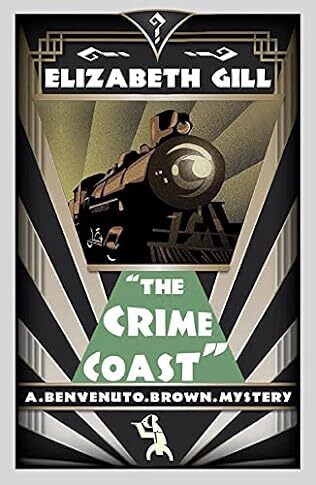The Crime Coast

A review of The Crime Coast by Elizabeth Gill – 231012
Elizabeth Gill, the nom de plume of Elizabeth Joyce Copping, is another new author to me. In her short life, she lived to be just thirty-three, she published three crime novels, all featuring her exotically named amateur sleuth, Benvenuto Brown. The Crime Coast, which also goes by the alternative title of Strange Holiday, was the first in the series, originally published in 1929 and reissued by Dean Street Press. I have come rather late to the party.
It is an all-action affair with enough drama and twists and turns to keep even the most jaundiced of readers on the edge of their seat. There are some picaresque characters to enjoy, especially The Slosher, and Gill does a good job in portraying the rather ritzy and somewhat bohemian lifestyle of a fashionable Riviera resort such as St Antoine. It was also good to come up against an absinthe smuggler.
The story starts off with a newspaper report detailing some astonishing events at Bishop’s hotel in London. A rich Argentinian woman, Luela de Costa, was found smothered in her room wearing just her jewellery while, almost at the same time, a woman is relieved of her famous and valuable jewels. Gill uses the report to set the background against which her story unfolds. She then introduces us to Paul Ashby who is about to go on holiday to the south of France but his plans are somewhat disrupted when a Major Ashby drops in on him.
The Major reveals that he is a dying man, desperate to see his son, Adrian, who he believes is painting in southern France, and offers to pay Paul to track his son down. Despite having no obvious qualifications for the role and not knowing the Major from Adam, Paul surmises that the proposition offers a purpose to his jaunt and is money for old rope. Unsurprisingly, he agrees.
Inevitably, as experienced readers of the genre come to expect, coincidences abound. Adrian Ashby was romantically attached to Luela, the cause of the rift with his father, and Benvenuto Brown and Adelaide Moon, whom Ashby quickly falls in with in St Antione, are both friends of Adrian and are, in their different ways, prepared to lend a hand. It soon emerges that the younger Ashby is in some trouble, being accused by Luela of stealing some jewels which she had given him and having a violent quarrel with her on the lunchtime of the day she was killed. There was also another young woman who had visited Luela just before her death, and the police are anxious to talk to both.
Of course, unwittingly, Paul has teamed up with two people who know more about the case than they let on and one of the books interesting aspects is Paul’s eventual realisation that there is more going on that meets the eye.
Much time is spent investigating the alibi of Luela’s brother who seems to have gone to enormous lengths to establish his whereabouts for the period around his sister’s murder, but has been rumbled by an observant Benvenuto who just happened to be in the right place at the right time. Is he the culprit?
The resolution is much simpler than that and, frankly, is rather easy to spot, a case of devotion and dedication. The delicious irony is that both Paul and Adelaide have had clues for a long time without realising their importance. Benvenuto’s detective style seems to be following a lead, seeing what happens, and then working out what to do next. He does not seem to have the brilliance of other amateur sleuths and it will be interesting to see how his character develops. He does share one attribute, though, with many of his contemporaries, a rather loose relationship with legal justice, happier to allow natural justice take its course.
It was a delightful romp and I look forward to my next encounter with Benvenuto.



